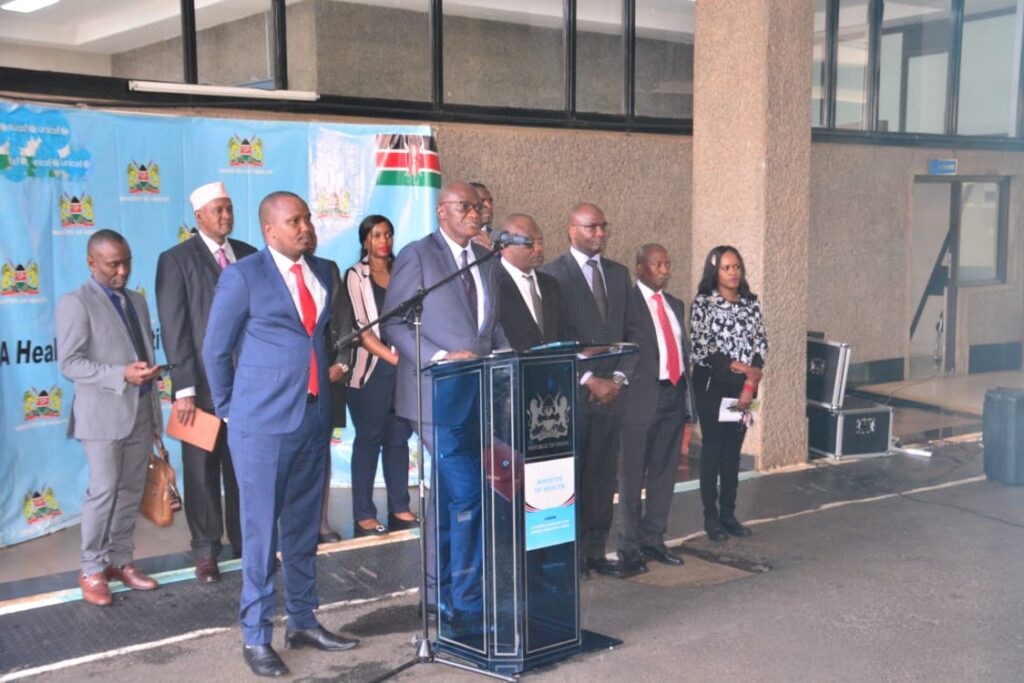
Kenya’s fight against HIV/AIDS has been one of resilience and strategic intervention. Over the years, partnerships with international donors have significantly bolstered the nation’s capacity to prevent new infections, treat those living with HIV, and maintain an active workforce dedicated to this mission. However, uncertainties surrounding continued donor funding have prompted the Ministry of Health to request an emergency allocation of Sh4 billion to sustain its HIV workforce.
Donor Funding: Backbone of Kenya’s HIV Response
For decades, international donors such as the United States President’s Emergency Plan for AIDS Relief (PEPFAR) and the Global Fund have been at the forefront of financing Kenya’s HIV programs. These initiatives have supported the procurement of antiretroviral therapy (ART), HIV testing kits, and condoms, while also funding prevention campaigns and community-based interventions.
However, Kenya’s graduation to a lower-middle-income country has brought shifts in donor priorities. Many international funding partners are scaling back financial aid, expecting the government to step up and address the funding gap. This transition comes at a critical juncture, where significant achievements in reducing HIV prevalence and new infections hang in the balance.
The Impact of Declining Donor Funding
- Healthcare Workforce Vulnerability
The most immediate threat is to the HIV healthcare workforce, comprising doctors, nurses, community health workers, and laboratory technicians. Donor funding has traditionally covered salaries, training, and logistical support for these professionals. Any funding disruptions could destabilize HIV service delivery across the country. - Decline in Prevention Efforts
Free distribution of condoms and HIV testing kits has already been affected by dwindling donor contributions. A reduction in these preventive measures risks increasing HIV transmission rates, reversing years of progress. - Gaps in Antiretroviral Coverage
Kenya has nearly 1.4 million people living with HIV, many of whom rely on donor-supported ART. Without adequate funding, stockouts and interrupted treatment could lead to drug resistance and a surge in mortality rates.
Ministry of Health’s Sh4 Billion Request
Recognizing the looming crisis, the Ministry of Health has sought Sh4 billion in emergency funding. The proposed budget aims to:
- Ensure continuity of salaries and support for the HIV workforce.
- Strengthen the supply chain for ART, testing kits, and condoms.
- Bolster community outreach programs focused on education and prevention.
This proactive approach signals a commitment to safeguarding the gains achieved in the fight against HIV/AIDS. However, the ministry’s request also highlights the pressing need for Kenya to establish a more sustainable HIV financing strategy.
Pathways to Sustainable Financing
- Increased Domestic Budget Allocation
The government must prioritize health in its national budget. Current allocations fall short of the Abuja Declaration, which recommends that at least 15% of national budgets be directed toward healthcare. - Innovative Financing Mechanisms
- Public-Private Partnerships (PPPs): Collaborating with private sector entities to co-finance HIV programs.
- Health Bonds: Issuing bonds specifically for health investments, including HIV/AIDS programs.
- Sin Taxes: Allocating proceeds from taxes on alcohol, tobacco, and sugar-sweetened beverages toward healthcare.
- Strengthening National Health Insurance
Expanding the scope and enrollment of the National Health Insurance Fund (NHIF) can provide a reliable funding stream for HIV services.
Addressing the Funding Crisis’ Broader Implications
- Impact on Public Health
Unaddressed funding gaps could lead to a resurgence of HIV infections. UNAIDS warns that without sustained support, new HIV infections could increase sixfold by 2029. This would place an enormous burden on Kenya’s already stretched healthcare system. - Economic Consequences
Health crises have far-reaching economic implications. Interruptions in HIV treatment and prevention could lead to increased healthcare costs and reduced productivity due to illness and mortality. - Erosion of Public Trust
Service interruptions could erode public confidence in the healthcare system, undermining efforts to engage communities in prevention and treatment programs.
Collaborative Solutions: A Shared Responsibility
- Donor-Government Partnerships
International donors should adopt phased withdrawal strategies, ensuring smooth transitions to government-led funding. Joint planning and technical assistance can also ease the transition. - Role of Civil Society Organizations (CSOs)
CSOs are pivotal in advocacy, resource mobilization, and service delivery. Their involvement ensures community-driven solutions that are culturally sensitive and effective. - Community Engagement
In addition, involving local communities in the planning and implementation of HIV programs fosters ownership and sustainability. Education campaigns should emphasize prevention and adherence to treatment to complement funding efforts.
Leveraging Innovation to Maximize Impact
- Integration of HIV Services
Merging HIV programs with other health services such as maternal health and tuberculosis treatment can optimize resource use and enhance patient care. - Digital Health Tools
Mobile health platforms and electronic medical records can improve service delivery, track patient outcomes, and enhance decision-making processes. - Task Shifting
Training community health workers to take on expanded roles can alleviate workforce shortages and extend the reach of HIV services.
Read: South African Investor Loses Bid to Freeze Genghis Capital Accounts Amid Debt Dispute
Kenya’s call for Sh4 billion in emergency funding reflects the urgency of sustaining its HIV workforce amid declining donor support. While the immediate focus is on addressing the funding gap, the crisis presents an opportunity to reimagine a more sustainable and resilient healthcare system. Additionally, increasing domestic investment, fostering innovative financing models, and strengthening collaborations with donors and communities, Kenya can secure its hard-won gains and continue progressing toward an HIV-free generation.




